by Vanessa Verdecia
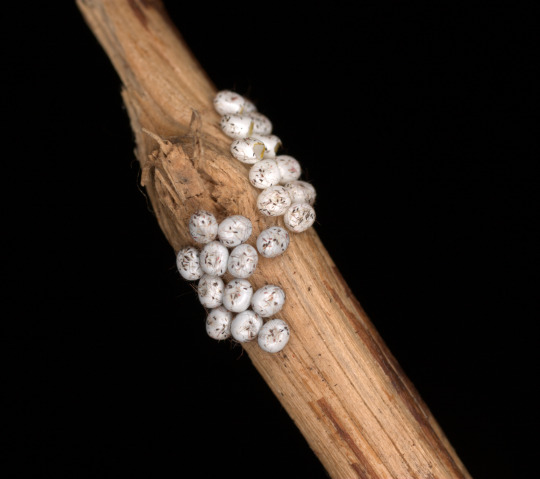
These Promethea Moth (Callosamia promethea) eggs were laid in clusters by a single female parent. When the caterpillars first hatched they measured approximately 3mm in length and as the caterpillars grew, they shed their skin and molted through a series of stages referred to as instars. Each one of these instars varies in appearance. Early instars are gregarious and remain together on the underside of the leaves.
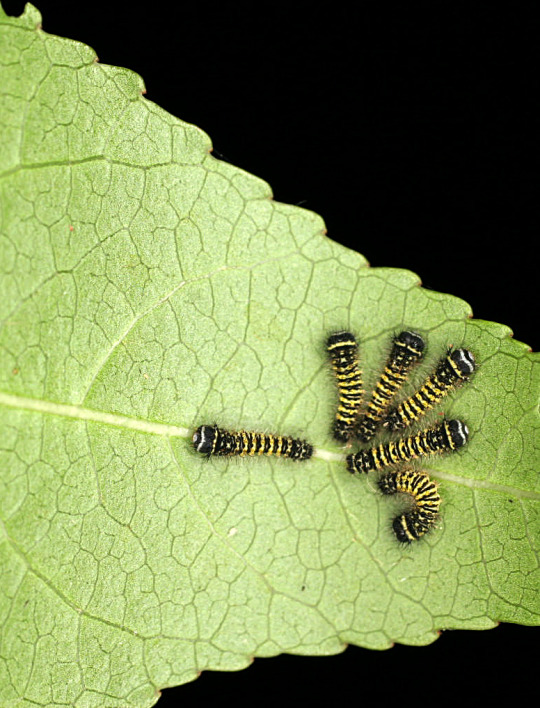
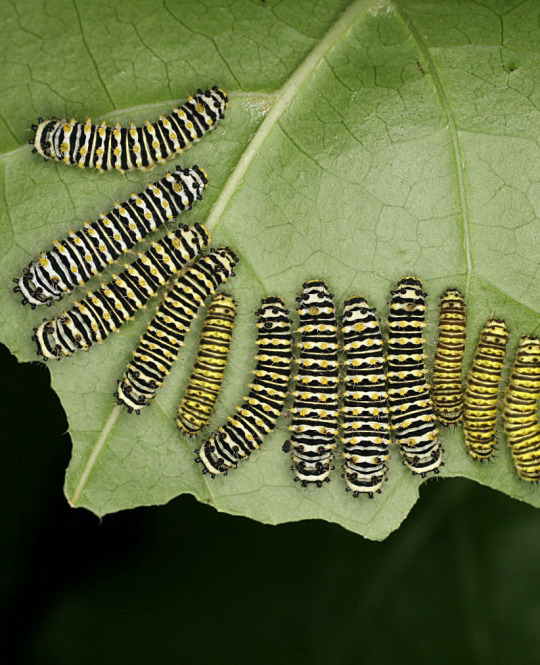
In the earlier instars the Promethea Moth caterpillars have a black and yellow banded appearance. In contrast to these earlier stages, the body of the last instar caterpillars are pale green and they are recognized by the protruding, bright red knobs that are located on the thoracic region as well as the yellow knob found on the eighth abdominal segment. The final instar caterpillars in this culture measured up to 4.5cm in length in a resting position, but they can measure up to 6cm when active and stretched out.
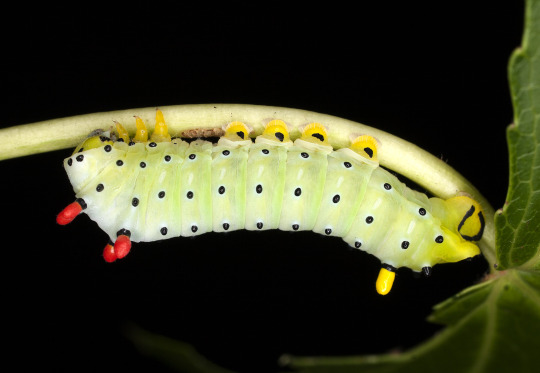
The Promethea Moth is a member of the family Saturniidae, a group known as the Giant Silkworm moths. In this group of moths, the mouth parts are reduced and the digestive tract is absent, which means they do not feed as adults. Most caterpillar species are big eaters, but in families like Saturniidae, the adult moths rely heavily on all the energy stored while eating in the larval stages.
Raising caterpillars in the lab is a labor of love. Caterpillars depend on having fresh food and a clean environment that is created by housing the live caterpillars in plastic chambers that help preserve the moisture in the leaves. This culture was reared on sweet gum, but Promethea Moth caterpillars will feed on many different trees. The caterpillars hatched on 8-June-2018 and some of the specimens in the final instars were seen spinning their cocoons on 17-July-2018.

The caterpillars produce silk on a leaf and the petiole and spin a cocoon with the leaf wrapped around it. After the caterpillars spin their cocoons, they will enter the pupal stage and overwinter until the late spring or early summer of 2019, however, a partial second generation in the summer is known to occur in Pennsylvania. Cocoons attached to the hostplant by the silk can be seen in the winter when all the other leaves have fallen.
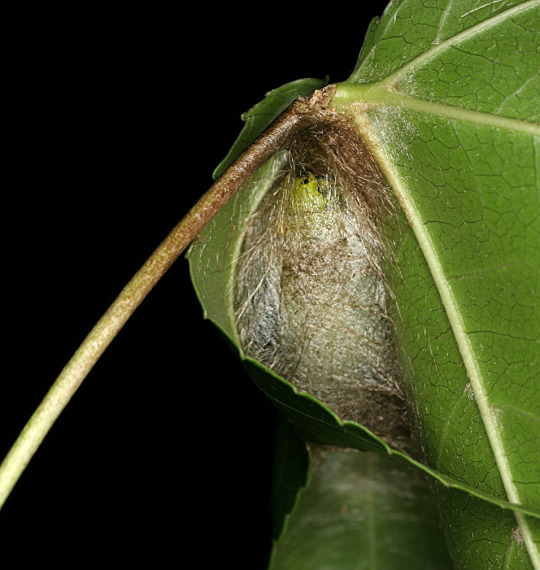
Vanessa Verdecia is a collection assistant in the museum’s Invertebrate Zoology Section. Museum employees are encouraged to blog about their unique experiences and knowledge gained from working at the museum.
